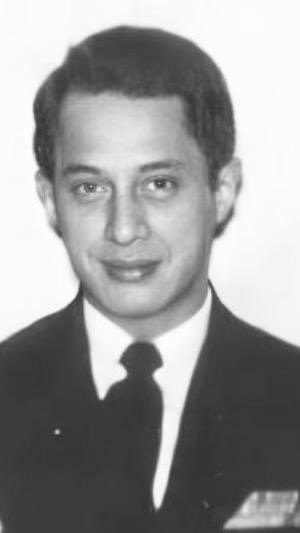BELL-MELVIN
MELVIN KEALOHA BELL

ETCM

FIRST NATIVE AMERICAN MASTER CHIEF
IN THE COAST GUARD
Melvin Kealoha Bell was born on January 25, 1920 and raised in Hilo, Hawaii. Shortly after graduating from Hilo High School he enlisted in the Coast Guard on November 5, 1938 aboard the USCGC Taney in Honolulu harbor. He enlisted as a Mess Steward as this was the only rating available to him as a Native American and has stated, “I just accepted it as a fact of life that my opportunities would be limited because of my race.”
Bell’s father was a line chief for the Hawaii Telephone Company and had taught his son how to repair electrical equipment. Bell thus had an interest in electronics and spent most of his off-duty time around the Taney’s radio room. When Bell was able to diagnose and repair a serious radio room problem that the ship’s radioman and the District Communications Officer had been unable to diagnose and repair, Bell was soon rewarded by being made a Radioman Third Class. Within several months Bell was transferred to the Cutter USCGC Reliance as the radioman-in-charge.
Bell was next transferred to the Coast Guard Radio Station at Diamond Head in Hawaii where his primary job was to listen for international distress transmissions. Early on the morning of December 7, 1941, Bell was awakened and told that Pearl Harbor was being attacked. Shortly thereafter he received a teletype dispatch from the Coast Guard District Office telling him to transmit on the distress frequency to all ships and stations that Pearl Harbor was being bombed. A few short weeks later Bell was sent to a Navy radio station where he listened to Japanese radio code broadcasts which he typed and sent to Navy crytographers. He was next assigned to the Navy Fleet Radio Unit-Pacific where he continued to type Japanese code messages. For their work in intercepting and recording Japanese code message prior to the Battle of Midway, Bell and his shipmates were awarded the Navy Unit Commendation.
About six months after the Battle of Midway, Bell was transferred to the Coast Guard Intelligence Unit at New Smyrna Beach, Florida, following which he was transferred to a similar unit on Long Island, New York. Here he wore civilian clothes, never uniforms, as their work was highly classified and he was here until World War II ended. After the war he learned that the radio messages he copied came from a German safe house in Manhattan and he was told his work was instrumental in a joint FBI/Naval Intelligence operation that broke up a Nazi espionage network in New York City. By the war’s end Bell had been advanced to the temporary rank of Chief Radioman but was reverted to E-6 after the war.
Bell remained on active duty following World War II and next served as radioman aboard USCGC Sagebush, homeported in San Juan, Puerto Rico. He was reinstated to the rate of Chief Radioman aboard this ship, but when the rating of Electronic Technician was created, he transferred from RMC to ETC. His next assignment was as an instructor in the new ET School at the Coast Guard Training Center in Groton, Connecticut. Here he met Norine Velma Hamlin of New Britain, Connecticut, and they were married in May 1950. His next assignment was as Executive Officer of USCG Loran Station, Panay Island, Philippines. His final assignment was to the USCGC Casco, homeported in Boston. In December 1958 Bell retired from the Coast Guard, having became the first Master Chief Electronics Technician in the Coast Guard and the first Master Chief Petty Officer of color. He spent the next 45-years as a civil service employee of the Department of the Navy, retiring from that position in September 2004, with an unprecedented nearly 66-years of federal service, both military and civilian.
ETCM Melvin Kealoha Bell died on September 9, 2018 at his home in Westminister, California, survived by his wife, 9 children, 26 grandchildren, and 37 great-grandchildren. He is buried at Riverside National Cemetery in Riverside California, where his grave memorial carries the inscription: ETCM - US COAST GUARD - WORLD WAR II - KOREA.
Submitted by CDR Roy A. Mosteller, USNR (Ret)

